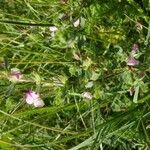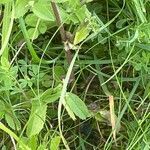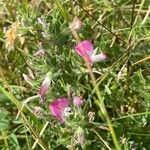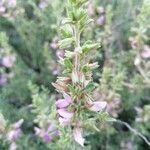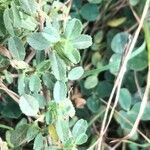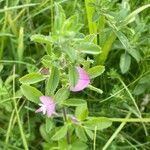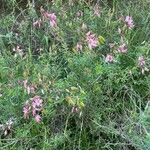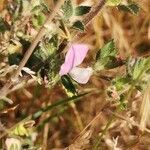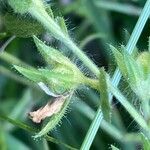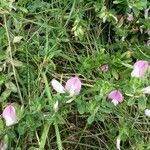A shrub. It keeps growing from year to year. It grows 60 cm tall. It has thorns or spines. The leaves are alternate and have 3 leaflets. The flowers are pea like and pale purple. It is a legume and produces nodules. The fruit is a pod with one seed. The seeds are kidney shaped. The seeds can be green, brown or black. They have a rough surface.
